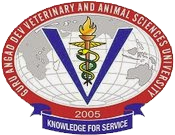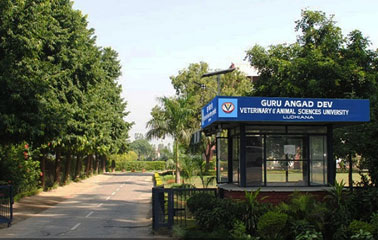

Dr N A T Carvalho, serving as Scientific Researcher, Sao Paulo State Buffalo Research Farm, Sao Paulo, Brazil visited Guru Angad Dev Veterinary and Animal Sciences University on an invitation by Dr SNS Randhawa, Director of Research-cum-Dean PGS, GADVASU. Dr Randhawa informed that Dr Carvalho is one of the pioneer scientists associated with development of Assisted Reproductive Technologies like Fixed-Time Artificial Insemination (FTAI) and Embryo Transfer Technology (ETT) in buffalo. Dr Carvalho interacted with the faculty and PG students and delivered an expert lecture on usefulness of ETT for improving the buffalo germplasm. He also visited ETT Lab of GADVASU and exchanged his expertise through practical demonstration of embryo flushing in buffalo.
Dr Carvalho revealed that Murrah buffalo in Brazil is capable of producing 5000 L milk per lactation. The germplasm of these superior buffaloes can be propagated through ETT. Scientists at GADVASU pointed out that buffaloes are the mainstay of Indian dairy industry contributing towards 50% of annual milk production. However, milk production per animal needs to be improved through ETT. This technique can be useful for the production of breeding bulls from the available superior germplasm. Semen of these bulls will help in faster multiplication of superior germplasm through AI. The relevance of ETT is more in developing countries like India where conventional progeny testing is difficult due to lack of milk recording system for evaluation and selection of breeding bulls.
Dr Randhawa said that GADVASU has the expertise in cattle embryo transfer technology and has produced over 50 calves in the field. The university has already trained 46 field veterinary doctors in the field of ETT under the state sponsored ETT project. Dr Randhawa informed that varsity is also in the process to build facilities for embryo transfer in buffaloes and Dr(s) SPS Ghuman, VS Malik and Sumit Singhal are working in this area under the leadership of Dr PS Brar, Head, Veterinary Gynaecology & Obstetrics. The in vivo embryo production using superovulation protocols based on exogenous control of follicular wave emergence has been standardized and results are promising. The visit of Dr Carvalho to GADVASU provided an excellent opportunity to gain experience as a step toward fulfilling the mutual goals of India and Brazil for increasing the reproductive efficiency of buffalo.
